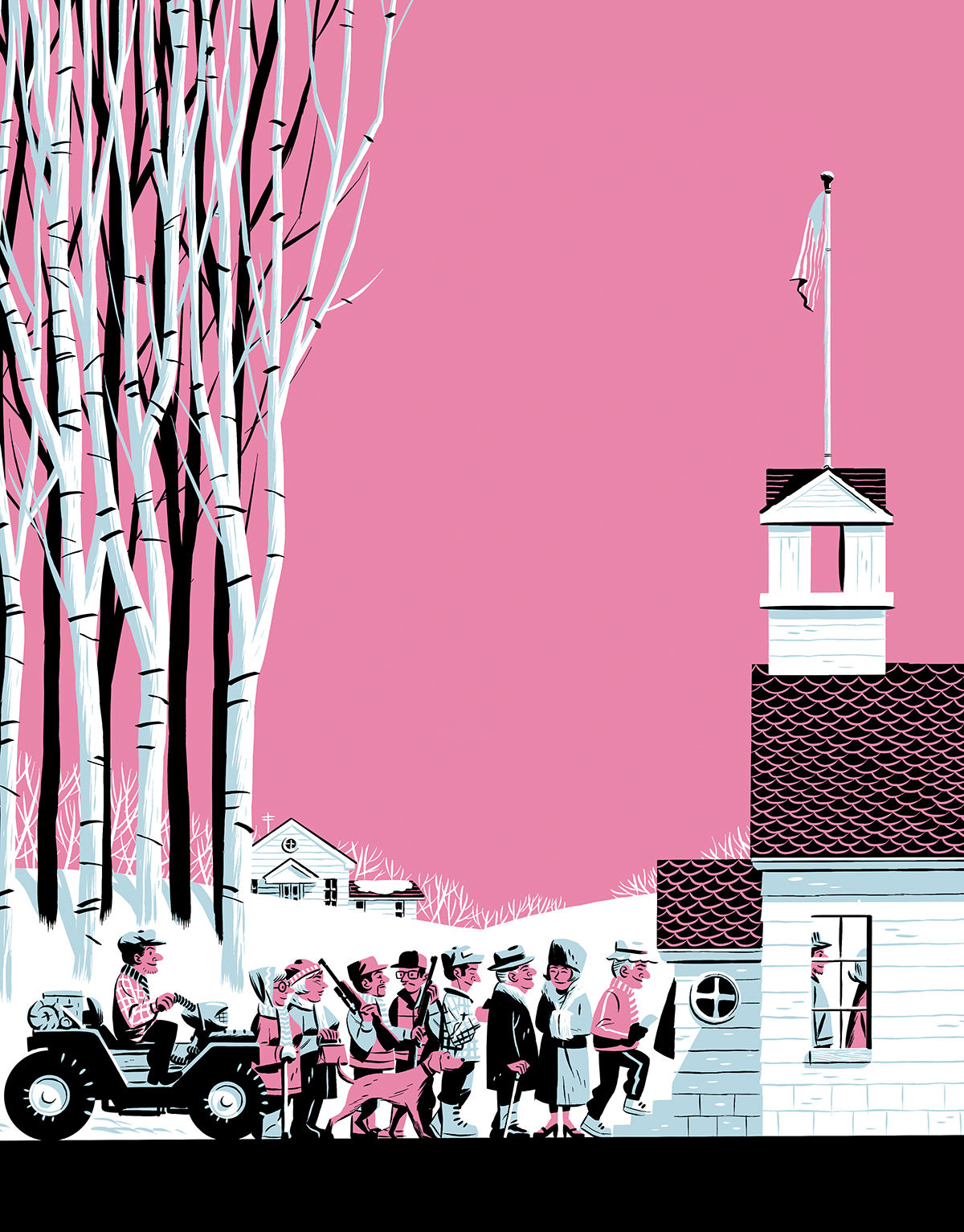Time for a New New Hampshire

Illustration by Michael Cho
The polls open for the New Hampshire primaries on January 10, once again putting the state in the spotlight as the first to cast lots for president.
Every four years, we hear about how seriously the citizens of New Hampshire take this responsibility, as they listen to a new round of candidates cruising diners and professing their love for maple syrup and the American way.
As far as demographics go, however, the Granite State doesn’t look much like the rest of the U.S. The average New Hampshire resident is older (a median age of 41, compared with 37 nationally), whiter (94 percent are Caucasian versus 72 percent countrywide), richer (the median household income is $65,028 versus $49,445), and resides in the country (62 percent live in urban areas versus 84 percent nationwide).
In other words, we’re giving a bunch of old, white, rural voters undue sway over the presidential election. So, enough with history for history’s sake — it’s time to base the primary lineup on an objective measure: yup, statistics.
Let’s assemble an algorithm that calculates which state truly has the most effective voters, and let them go first. Begin with the average legislative effectiveness of congressmen (as in, who introduced and actually passed bills), add to that the state’s voter turnout for the past two presidential elections, and you’re off to a good start. And if New Hampshire comes out on top anyway, at least we’ll know they earned it.